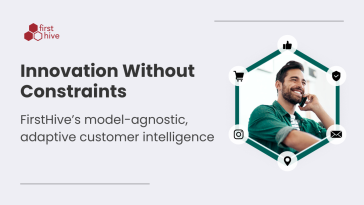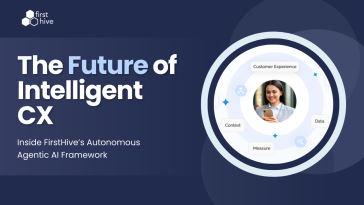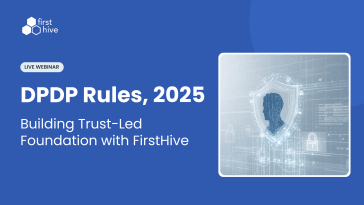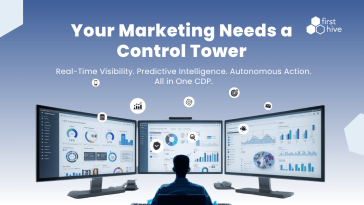In the world of marketing, data is the key to unlocking valuable insights about customers and improving marketing strategies. Among the different types of data, 1st party data holds a special place. In this blog post, we will explore the meaning of 1st party data, its benefits, and strategies for effectively using it.
What is 1st Party Data?
1st party data refers to the data that a company collects directly from its own interactions with customers. It includes information such as customer profiles, purchase history, website interactions, and email engagements. This data is considered the most valuable and reliable as it comes directly from the source.
Benefits of 1st Party Data
1st party data offers numerous benefits for marketers:
- Accuracy and Reliability: Since 1st party data comes directly from customers, it is highly accurate and reliable.
- Deeper Customer Insights: By analyzing 1st party data, marketers can gain deeper insights into customer preferences, behaviors, and needs.
- Personalized Marketing: With 1st party data, marketers can create highly personalized and targeted marketing campaigns, leading to better customer experiences and higher conversion rates.
- Improved Customer Retention: By understanding customer behavior and preferences through 1st party data, companies can tailor their products and services to better meet customer needs, leading to improved customer retention.
- Compliance with Privacy Regulations: As privacy regulations become stricter, relying on 1st party data ensures compliance with data protection laws.
Strategies for Using 1st Party Data
Now that we understand the meaning and benefits of 1st party data, let’s explore some strategies for effectively using it:
- Segmentation and Targeting: Use 1st party data to segment customers based on their demographics, interests, and behaviors. This allows for targeted marketing campaigns that resonate with specific customer segments.
- Personalization: Leverage 1st party data to personalize marketing messages, offers, and recommendations. Personalized marketing creates a more tailored and engaging experience for customers.
- Customer Retention: Analyze 1st party data to identify opportunities for improving customer retention. Use the insights gained from the data to develop retention strategies, such as loyalty programs or personalized offers.
- Optimizing Ad and Email Marketing Campaigns: By analyzing 1st party data, marketers can optimize their ad and email marketing campaigns. They can identify which campaigns perform well and make data-driven decisions to improve future campaigns.
- Product and Service Optimization: Use 1st party data to understand customer preferences and feedback. This information can be used to enhance existing products or develop new offerings that better meet customer needs.
- Improved User Experience: By analyzing 1st party data, companies can identify pain points in the customer journey and make improvements to provide a seamless and enjoyable user experience.
- Increase User Acquisition: Use 1st party data to identify potential new customers who share similar characteristics and behaviors with existing customers. This can help in targeting and acquiring new customers effectively.
- A/B Testing: Use 1st party data to conduct A/B tests and gather insights on the effectiveness of different marketing strategies, messages, or offers.
By implementing these strategies, companies can unlock the full potential of their 1st party data and drive better marketing outcomes.
Conclusion
1st party data plays a crucial role in customer marketing efforts. It provides accurate and reliable insights into customer behavior, preferences, and needs. By leveraging 1st party data effectively, companies can create highly personalized marketing campaigns, improve customer retention, and optimize their overall marketing strategies. With stricter privacy regulations, 1st party data also ensures compliance and builds trust with customers. So, make the most of your 1st party data and unlock its true potential.
Now, let’s address some frequently asked questions (FAQs) about 1st party data:
1. What exactly is 1st party data?
1st party data refers to the information collected directly from your customers or users. It includes data such as their demographics, purchase history, website interactions, and any other data that they willingly share with your company.
2. How is 1st party data different from 3rd party data?
While 1st party data is collected directly from your customers, 3rd party data is obtained from external sources. 3rd party data is often aggregated from various websites, apps, or data providers, and it may not be as accurate or specific to your target audience as 1st party data.
3. How can 1st party data benefit my marketing efforts?
By utilizing 1st party data, you gain valuable insights into your customers’ preferences, allowing you to create highly targeted and personalized marketing campaigns. This level of personalization can significantly improve customer engagement, increase conversion rates, and enhance overall customer satisfaction.
4. Is collecting 1st party data compliant with privacy regulations?
Yes, collecting 1st party data is generally compliant with privacy regulations, as long as you obtain proper consent from your customers and handle their data responsibly. With stricter privacy regulations, it is crucial to be transparent about how you collect, store, and use customer data to maintain their trust.
5. How can I effectively leverage 1st party data?
To make the most of your 1st party data, it is essential to have a robust data management system in place. This system should allow you to collect, organize, and analyze the data effectively. By understanding your customers’ behavior and preferences, you can tailor your marketing strategies to meet their needs and expectations.
In conclusion, 1st party data is a valuable asset for any company’s marketing efforts. It provides accurate insights into customer behavior, enables personalized marketing campaigns, and ensures compliance with privacy regulations. By leveraging 1st party data effectively, you can unlock its true potential and drive significant growth for your business. So, start harnessing the power of your 1st party data today and watch your marketing strategies thrive.








